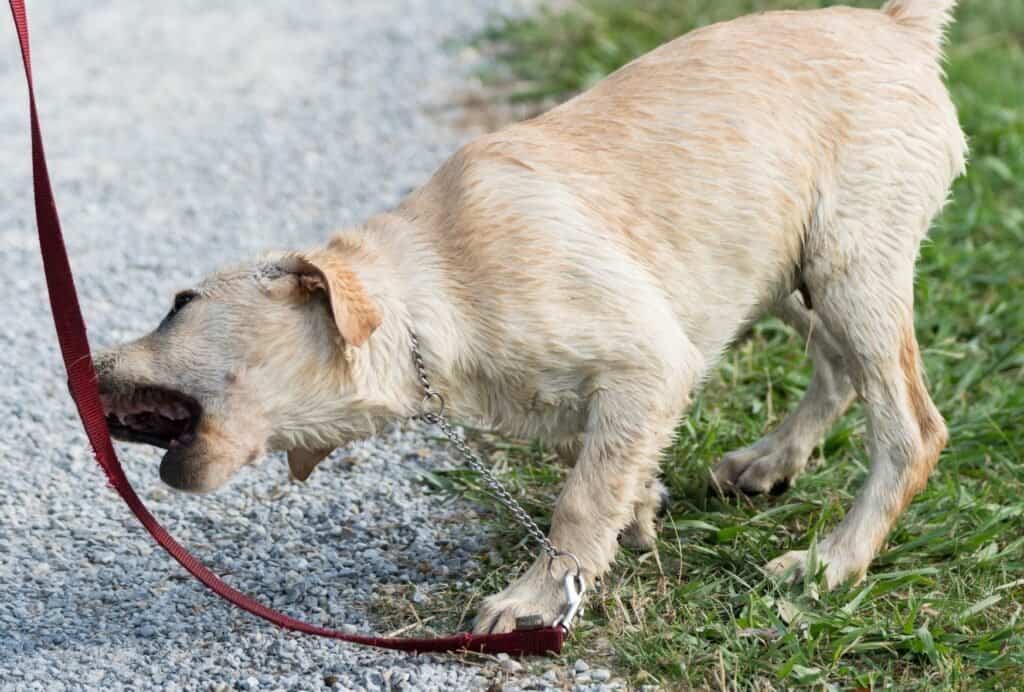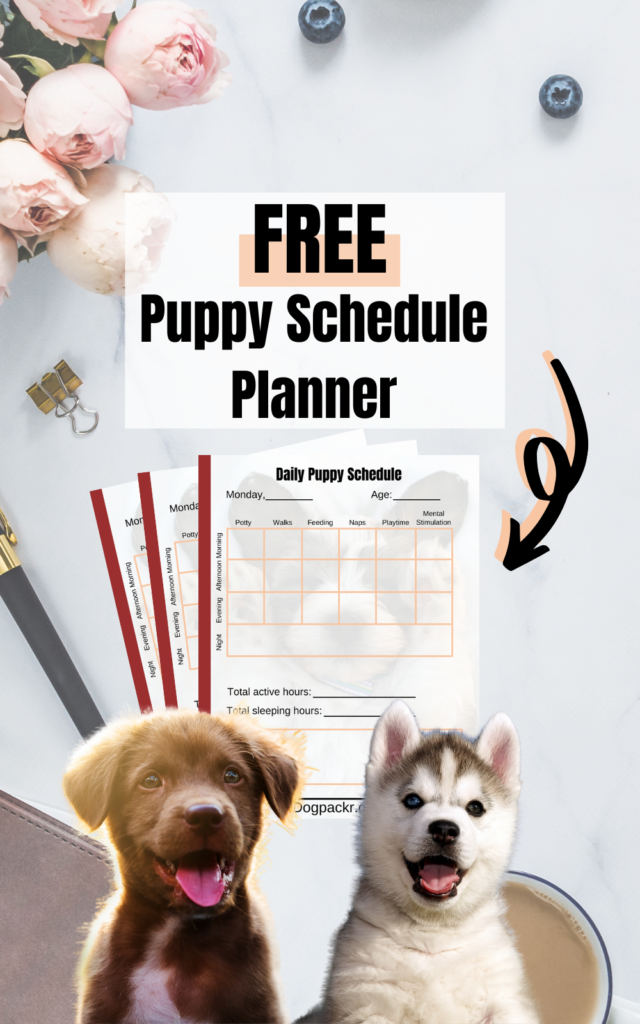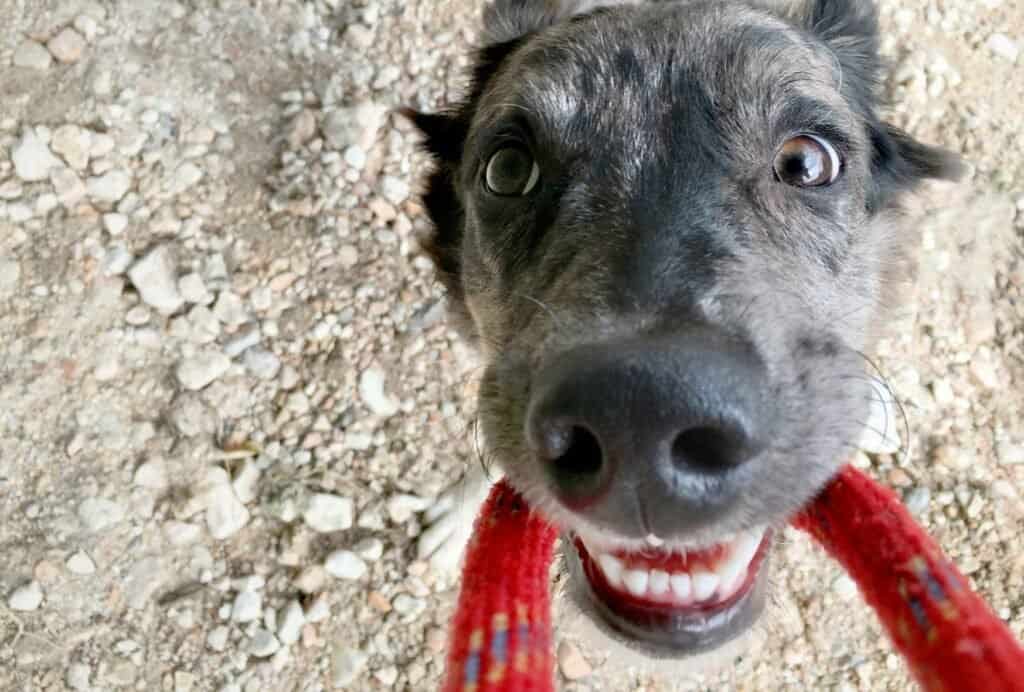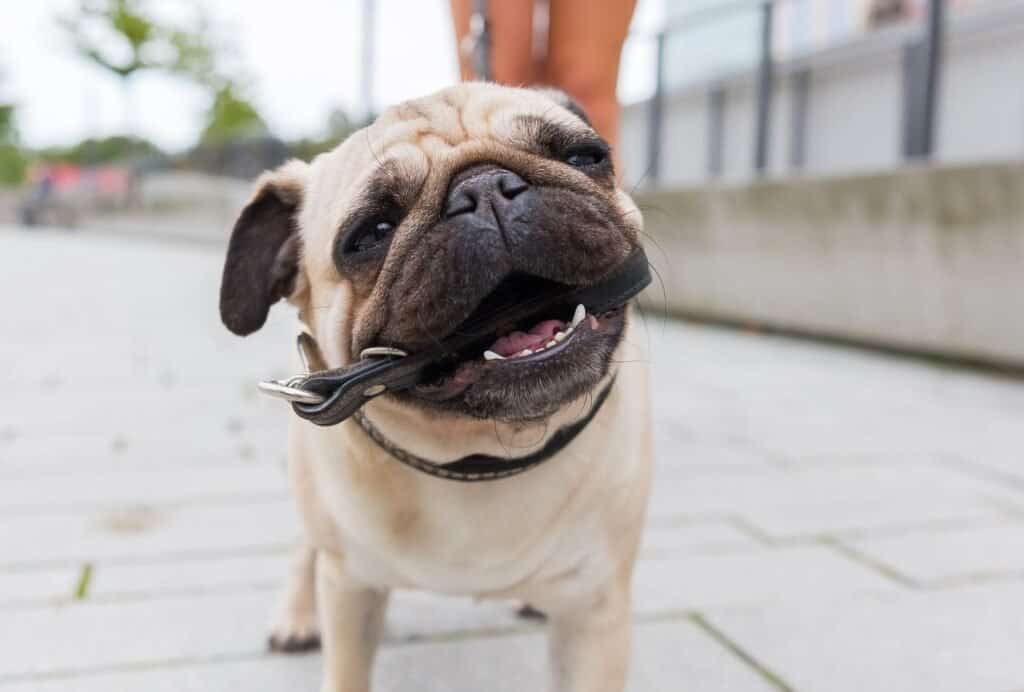Going for a walk with your pup is one of the best parts of having a dog! Getting the chance to explore your neighborhood or go out for a hike with your best friend is always fun.
Well, unless he won’t walk because he’s too busy biting his leash!
A dog biting his leash while you’re trying to walk him can be really frustrating. You’re just trying to provide an opportunity for the both of you to get a little exercise, but your dog seems to have other ideas.
Luckily, there are ways that you can teach your dog that a leash isn’t for biting. But the first step to doing this is understanding why your dog won’t stop biting his leash.
Table of Contents
Why Is My Dog Biting the Leash When Walking?
Before we can get into how to stop a dog from biting the leash, you first need to understand why your dog is even showing this behavior.
As always, there are a number of possible reasons. Let’s quickly go over the most common ones.
He Wants to Play
Is your dog super playful in general? If so, he might be biting his leash because he’s trying to get you to play with him!
This could also be the case if you’ve been encouraging the behavior unintentionally. Maybe you thought it was cute that he runs around grabbing the leash before you put it on. You may have rewarded him for treating the leash as a toy and continuing to interact with him while he’s behaving this way.
Overexcitement
Going for a walk is a lot of fun!
Your dog obviously agrees. The chance to get out in the world and do some sniffing and exploring is a really exciting prospect.
But sometimes it can be a little too exciting. If your dog isn’t getting enough stimulation during the day, then he might direct all his excited energy towards his leash.
Likewise, if your dog is getting too much stimulation during the day, then he may lose control of his inhibitions and see the leash as something to chew on.
Walking a dog that’s overexcited can be a serious challenge. Learn more about how you can help your dog here: How to Deal with an Overexcited Dog on a Walk.
Frustration
Dogs don’t naturally understand how to walk on a leash. They need you to teach them! If your dog hasn’t been properly leash trained, then walking on the leash could be frustrating for him.
He may not necessarily understand why he isn’t allowed to just run around and roam free. And since he doesn’t understand, he might get pretty annoyed!
In response to this, your dog may start biting at the leash. After all, the fact that it’s keeping him from doing all the exploring his heart desires is what’s frustrating him so much!
Overstimulation or Stress
Walks are supposed to be fun for your dog, right? They’re a chance to look around and get in some exercise. What dog doesn’t love that?
Well, some dogs can get pretty overwhelmed on walks. There’s a lot going on out there, and it might be a bit much for him.
You may want to consider your dog’s background, too. Is he a rescue dog? Maybe he’s had bad experiences while on walks in his previous home. If that’s the issue, then he might try to bite his leash to relieve some of the tension he’s feeling.
If your dog is stressed, he’ll show other signs too. Check out these articles for more information:
How to Stop a Dog from Biting the Leash
Now that you know the reasons why your dog keeps biting his leash, let’s get into the ways that you can help him stop!
1. Never Use the Leash as a Toy!
If your dog gets so excited when you pull out his leash that he starts jumping around and trying to play with it, it can be pretty tempting to play along.
But if you reward this behavior by engaging with the leash like it’s a toy, that’s not going to help the issue at hand. In fact, it’s only going to make it worse.
Your dog doesn’t necessarily understand that his leash isn’t really a toy. All he knows is that it’s something he gets to play with!
This is why you should never use the leash as a toy. When it’s time to go for a walk, try to remain calm when you pull out the leash. If he starts trying to play, then ignore that behavior. That will help prevent him from associating the leash with playtime.
2. Don’t Pull Back
If your dog is biting his leash while you’re walking, you might be instinctively trying to tug the leash back. How else are you supposed to get it out of his mouth?
It might seem counterintuitive, but by tugging the leash you’re actually engaging with your dog even more. And your dog may not be able to tell the difference between good attention and bad attention. All he knows is that he’s getting attention!
This is where some positive reinforcement dog training comes in. You need to ignore this behavior if you want it to stop. So make sure you’re not pulling back!
3. Distract Your Dog and Reward No-Biting Behavior
Ignoring bad behavior is just half of positive reinforcement training. The other half is showing your dog what behavior you actually want from him.
You should also be mindful to set your dog up for success. This will help the training process be easier on both your dog and on yourself.
So how can you distract your dog? One of the best things to do is to ask him to do something else and then reward him. If he knows any tricks, get him to perform one and then give him a treat.
Need some training inspiration? Check out these 11 easy dog tricks for beginners!
4. Give Him a Toy that He Can Tug
If your dog is super set on playing, then it’s your job to give him something other than his leash that’s appropriate to play with!
It might be a good idea to bring a tug toy on your walk with you. This way, if your dog really just needs to bite and play with something, you’ve got a toy he can use.
This is also a good way to teach your dog that his leash isn’t a toy. By stopping him from biting his leash and redirecting his attention towards something else, you’re teaching him what appropriate behavior on walks looks like.
5. Don’t Hype Your Dog Up Before Walks
Lots of owners don’t realize that they’re the cause of their dog’s leash biting problems. If your dog is easily excited or overstimulated, then hyping your dog up could be why your dog is biting his leash.
It’s very important to remain calm when you’re getting your dog’s leash. Speak quietly, don’t engage with him too much if he’s acting super excited, and don’t put the leash on your dog until he’s settled down.
This is part of setting your dog up for success. Model the behavior you want your dog to show while you’re out on your walk!
6. Teach Him to Focus on You During Walks
If your dog is biting his leash because he’s getting overstimulated on his walks, then teaching him to focus on you will help.
Try to keep your dog’s attention on you as much as possible while you’re walking. This means calling his name and rewarding him when he looks back at you.
Any time he chooses to focus on you rather than something else, he should get rewarded for that too. Even if you didn’t ask for it! Being able to keep your dog’s focus while you’re walking will help your dog avoid biting his leash.
7. Let Him Sniff and Let Him Find Treats
Dogs have incredible senses of smell. They use their noses to get around and learn about the world around them!
This means that your dog’s nose is a great distraction from his leash. Take advantage of that and let your dog use his nose to sniff during walks.
While you’re working on leash training, you can also scatter some treats around. Then, let your dog sniff them out. This keeps your dog’s attention away from his leash, and lets him practice using his most powerful sense.
8. If Nothing Helps: Get a Metal Leash
Some dogs are just adamant about chewing their leash no matter what. If that’s your dog, then you may want to consider investing in a metal leash.
It’s best to try and train the behavior out of your dog, but if nothing is working then metal leashes will at least prevent your dog from chewing his way out of his leash!
Conclusion
One of the parts of dog ownership that owners find the most fun is going for walks. But if your dog chews on his leash, this can be both frustrating and dangerous.
If your dog is a leash biter, then the above tips will help you train this behavior out of him. In turn, this will allow you to enjoy your walks, and keep your dog safe on them too!
*Disclosure: This post may contain affiliate links, meaning, I get a commission if you decide to make a purchase through one of my links, at no cost to you.





